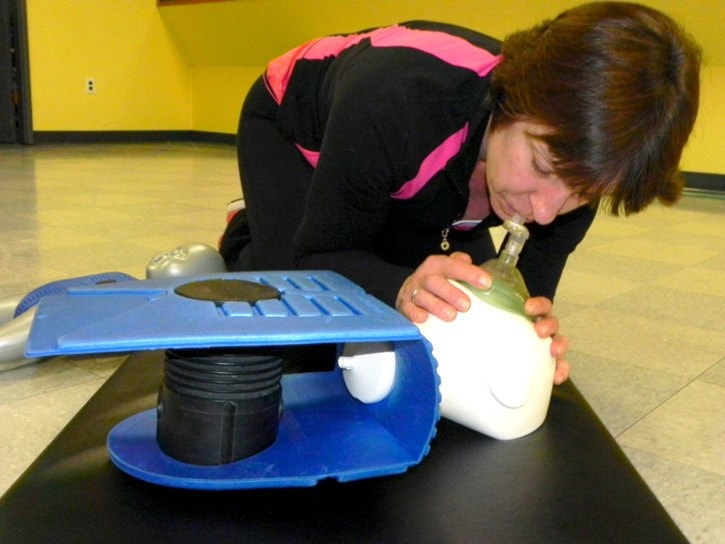Emergency situations happen every single day.
You could find yourself facing a child who is choking, a co-worker who is suddenly unconscious or a complete stranger in need of first aid.
It could happen at anytime, and a Hope first aid instructor stresses that it's better to be prepared for it.
"You can be a vital link to that person's survival, if you know what to do," says Kim Richardson.
There are numerous Red Cross courses coming up at the Hope Recreation Centre, and Richardson can help anyone figure out which class is the best.
Anyone who hasn't taken a course in the past three years, is due to get re-certified. First aid certification only lasts three years, as a way to make sure people stay up-to-date on life-saving techniques. And that's getting easier than ever, Richardson says.
"It's so much easier," she says. "The courses are user friendly, and I can promise you will leave knowing how to save someone's life."
The techniques taught several years ago were somewhat complex, she explains. But it's all been streamlined, with shorter, more concise lessons.
There's something else that has changed in the past few years, too. The arrival of AED machines in many larger centres, including the Hope Recreation Centre, means anyone can become a first responder. Everyone who takes a Red Cross course will come out knowing how to operate an AED.
However, the machine is probably one of the simplest machines to operate.
"Once the AED is attached to the patient, it takes over," Richardson says. And while they are designed to be extremely user-friendly, handling one in a first aid course can hugely increase the chance of helping save a life.
"AEDs do save lives," Richardson says. "For every minute an AED is not hooked up, the chance of survival diminishes by 10 per cent."
And in a situation where someone is not breathing, the clock is ticking.
It's a scary thought, but reality. And it's not just adults who need to be prepared to help in an emergency.
Children are capable of administering simple first aid, and of carrying out the number one step in any emergency.
"Call 911," Richardson says. "That's the most important thing you can do."
But beyond that, children can learn awareness, how to recognize dangerous situations, and basic first aid, starting as young as five years old.
"Never underestimate the smarts of a child," she says.
Courses for kids are kept light and upbeat.
The intensity of the courses increases as children grow into their early teens, when they can be taught CPR skills. And while someone who learns first aid may never need to save a life, it's a skill that will shine through in other situations.
"We teach the babysitting course," she says, which includes first aid. Learning to be a confident and reliable babysitter can lead to better employment. And first aid certification could that one thing that sets a young person apart in the job market.
"It would definitely increase the chance of getting an interview," Richardson says.
There are several courses this fall available, including the Red Cross People Savers, for ages nine to 10 years old. That course starts on November 21, and and runs from 9 a.m. to 12 p.m. for $40.
A similar course for children ages 11 and 12 runs the same day from 1 p.m. to 5 p.m., for $50.
The Red Cross Babysitting program runs through four days over the Christmas break, and is designed for children aged 11 and older for $65.
For teens 15 and older, and adults, there are three more course this year. The first is the Red Cross Standard First Aid with CPR-C and AED on November 26 and 27.
Next is the Red Cross CPR-C and AED course on December 4, then the Red Cross Child Safe with CPR-B on December 11.
For more information, phone 604-869-2304.
